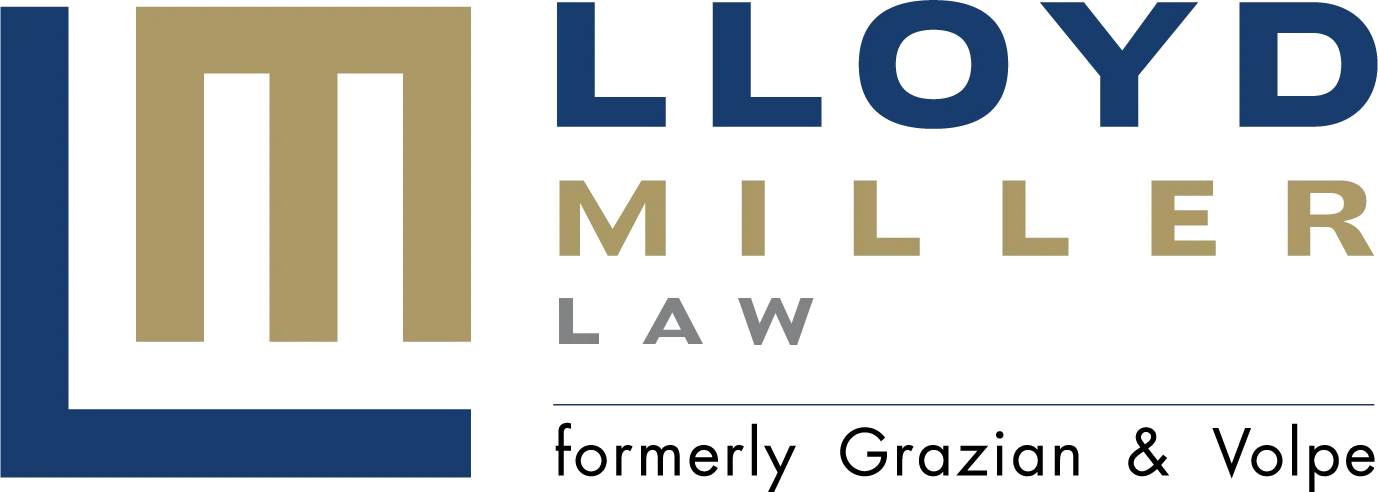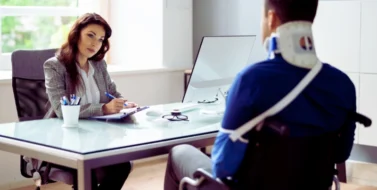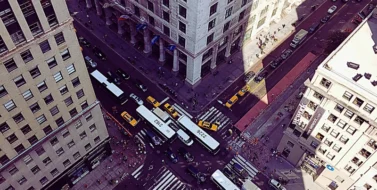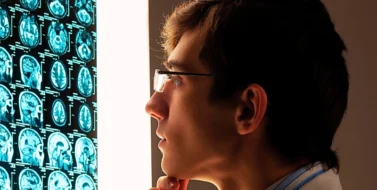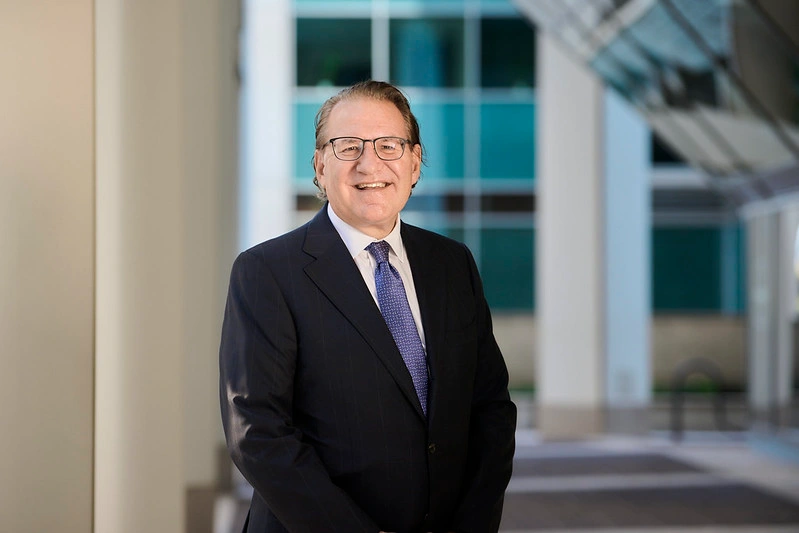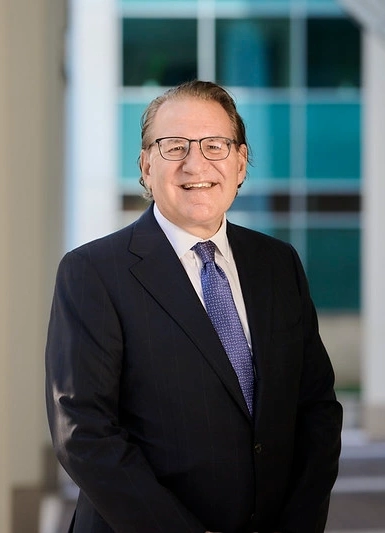In rear-end auto crashes, spinal injuries of the neck and back often occur. A herniated disc of the spine from a rear-end auto crash is a common injury. But a herniated disc injury is usually not diagnosed by your physician for many months, despite ongoing pain, numbness and tingling in your neck, back, arms or legs.
The attorneys at the law firm of Lloyd Miller have handled hundreds of auto crash cases and understand the medicine related to a herniated disc injury. In this Blog—the first in a series on spinal injuries caused by auto accidents— we shall explain what a herniated disc injury is and how a herniated disc injury is eventually diagnosed.
A new, acute herniated disc in the spine is usually not seen on imaging studies immediately after a rear-end auto collision. In fact, the diagnostic features of a herniated disc which are found on a magnetic resonance imaging study (“MRI”) actually take time to develop in the spine before the MRI will be positive.
This phenomenon holds true even though you may have symptoms consistent with a herniated disc injury in the hospital Emergency Department immediately after an auto collision. Indeed, in the Emergency Department immediately after the car crash, the X-rays of the neck or back are usually negative, even though an MRI study of spine turns out positive for an acute herniated disc several months later.
Table of Contents
Can a Car Accident Cause a Herniated Disc?
Our car accident attorneys understand the biomechanical processes that cause a herniated disc. In a rear-end car crash, the mechanical forces acting on your body can result in an abnormal flexion-extension of your spine. When this happens, one of the spinal discs between two of your vertebra can become herniated, that is, the impact forced “disc material beyond the limits of the intervertebral disc space.”* Our spinal discs are made up of two parts: the outer, fibrous part known as the annulus or annular ring; and the inner part, which is a jelly-like nucleus that absorbs shocks to the spine. Think of your discs as if they were jelly donuts, which act as the shock absorbers of your spine.
When a herniated disc occurs, what happens is that the mechanical forces from the rear-end car impact tear the annulus (the outer wall of the donut) and some of the jelly-like nucleus pushes or extrudes into the vertebral space. The resulting disc protrusion often irritates a nearby spinal nerve, causing signs and symptoms of numbness, tingling, discomfort and pain.
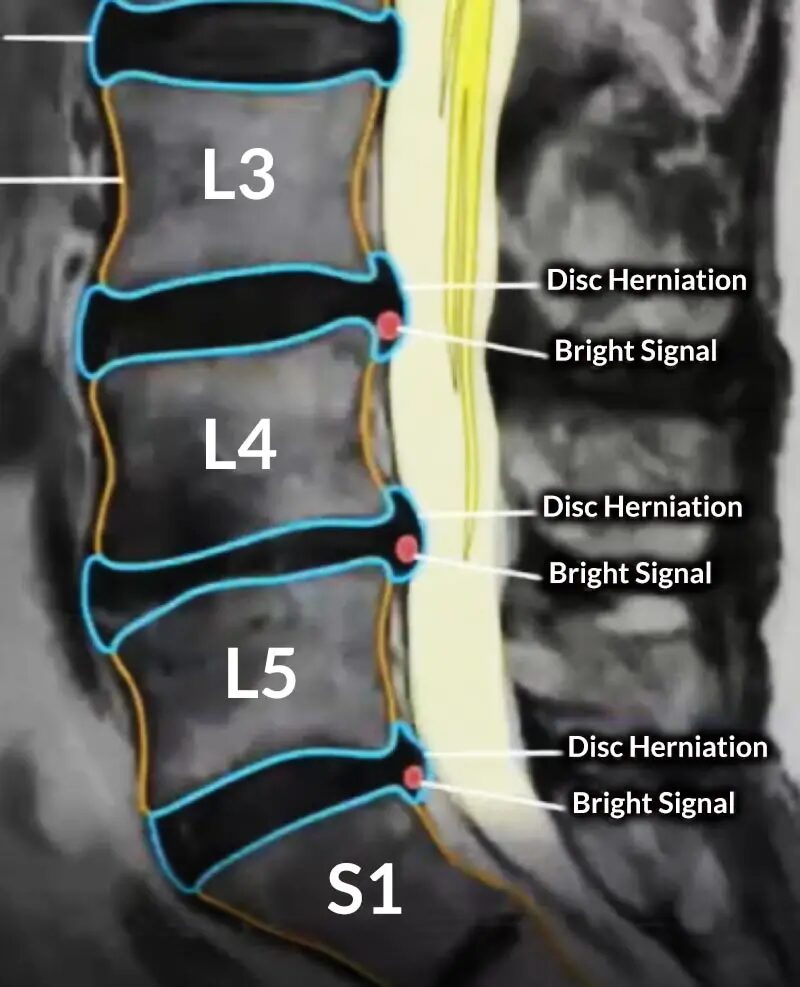
MRI showing herniated disc.
The MRI study of the cervical, thoracic or lumbar spine performed at the right time can be the gold standard for diagnosing an acute herniated disc ninety-two percent (92%) of the time. An MRI study involves radio waves, a magnetic field and a computer to create image of the spine and surrounding tissues. Our attorneys know how to read and review MRI images from a legal point of view. If your attorney does not understand how an MRI is read and interpreted, then you can lose your case.
Winning your case starts and stops with understanding the MRI results; what demonstrates an acute disc injury versus a chronic disc disease. A bright signal or “lucency” found on the T2 weighted images of disc on the MRI study proves relative acuteness from a rear-end auto collision. In older patients who have suffered from a rear-end auto injury, the presence of this bright signal can prove a new disc injury which is superimposed over a naturally aging spine. What the defense attorneys and defense experts like to do is call it degenerative disc disease of the spinal discs and blame that as the cause of numbness, tingling, discomfort and pain after a car crash, even though you were asymptomatic for a disc injury before the impact.
That’s why you need a good attorney.
At the law offices of Lloyd D. Miller, our years of experience in spine injuries have given us the knowledge and skills to help our clients win their cases and recover the money they need to get on with their lives. After an auto accident, if you have low back pain, neck pain, or numbness, tingling in your arms, hands, legs or feet then you may a herniated disc or other disc injury.
Learn More About Auto Accidents and Spinal Cord Injuries
The Many Faces of Spinal Injuries
The Many Faces of Spinal Injuries Part II: Quadriplegia
The Many Faces of Spinal Injuries Part III: Paraplegia
Car Accidents: Two Opportunities for Personal Injury at Every Impact
Rear-End Auto Crashes: Post-Traumatic Cervicogenic Headaches
Rear-End Auto Crashes: Spinal Trauma and Pre-Existing Degenerative Disc Disease (“DDD”)
When a Car Accident Aggravates a Pre-Existing Condition
